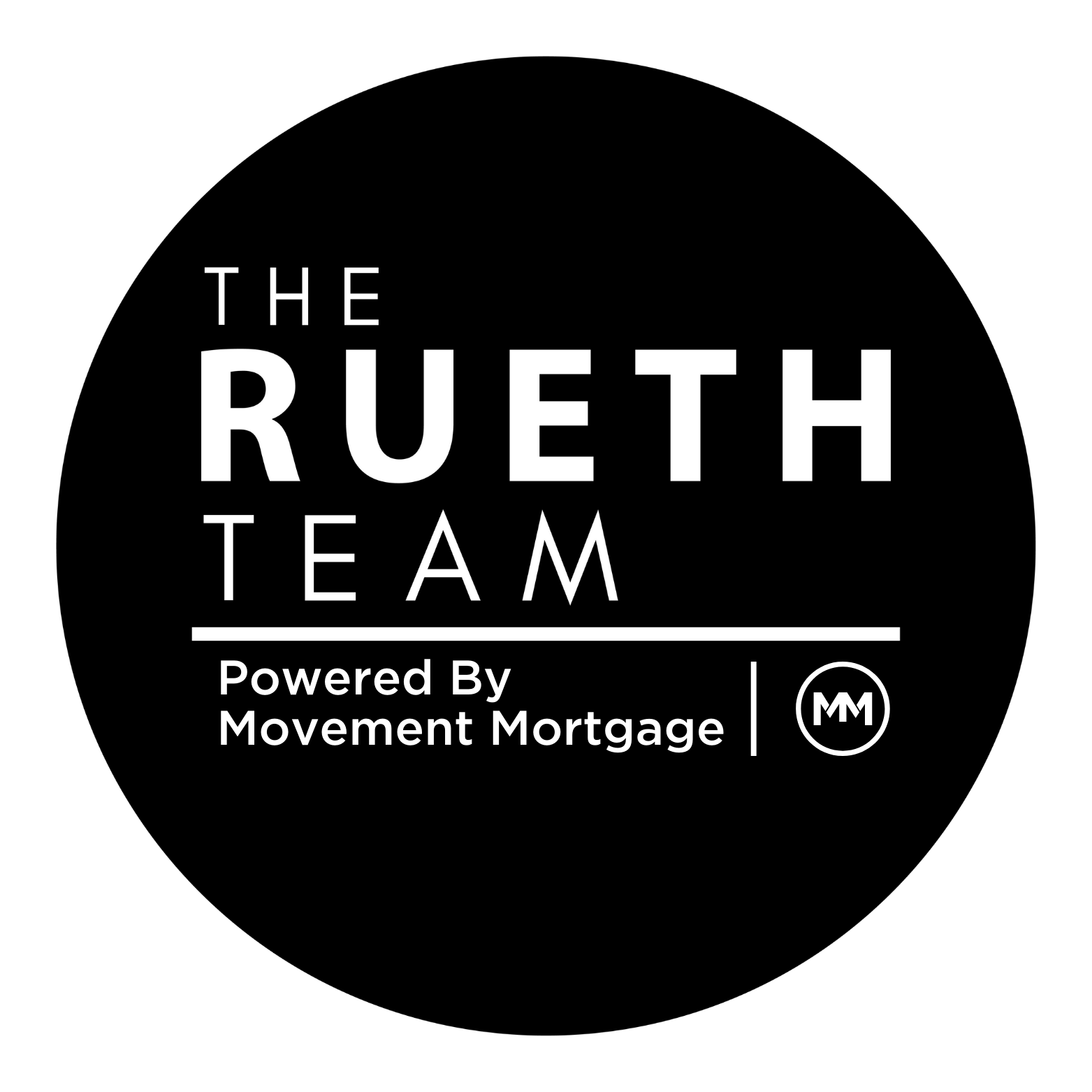Multi-family vs. Single-family Investments: Weighing the Pros and Cons
Investing in rental properties can be a lucrative venture, providing a steady stream of passive income and long-term financial security. Whether you are a real estate investor looking to expand your portfolio or a first-time buyer considering entering the market, the choice between multi-family and single-family rental properties is an important decision. In Denver, a city with a thriving rental market and a growing population, there are numerous opportunities for investment. Understanding the benefits and considerations of both multi-family and single-family properties can help you make an informed decision that aligns with your investment goals and financial strategies.
Types of Denver Rental Properties: Single-Family vs. Multi-Family
When it comes to rental properties in Denver, investors have two main options to choose from: single-family homes and multi-family properties.
Single-family homes are standalone properties that are typically smaller in size and consist of only one unit. These properties are suitable for small families or individuals looking for their own space. On the other hand, multi-family properties are buildings that contain multiple units, such as duplexes, triplexes, or apartment complexes. These properties cater to tenants who are willing to share common spaces and amenities with other residents.
The key advantage of single-family homes is their affordability compared to multi-family properties. They often have lower purchase prices and maintenance costs, making them a more accessible option for first-time investors. However, the potential rental income is usually lower.
Multi-family properties, on the other hand, offer economies of scale. With multiple units in one building, investors can benefit from higher rental income and lower vacancy rates. However, these properties come with higher maintenance and management costs.
When deciding between single-family and multi-family properties, investors should consider their investment goals, rental income potential, property management preferences, and market conditions. Single-family homes can be seen as a long-term investment with potential for appreciation, while multi-family properties can provide more immediate cash flow. Ultimately, the choice depends on an investor’s risk tolerance, budget, and investment strategy.
Advantages of Single-Family Homes
Single-family homes offer a range of advantages that make them an attractive option for real estate investors. Firstly, these properties are typically more affordable compared to multi-family properties. This lower purchase price can make it easier for first-time investors to enter the real estate market and build their investment portfolios. Additionally, single-family homes tend to have lower maintenance costs since there is only one unit to upkeep. This can help investors minimize their expenses and increase their potential return on investment. Furthermore, single-family homes often appeal to a wider pool of tenants, including families and individuals seeking their own space. This can result in greater tenant stability and longer-term occupancy rates, providing investors with a steady stream of rental income. Overall, single-family homes are a viable option for investors looking for a more affordable and manageable investment with the potential for long-term appreciation and reliable monthly income.
Affordability
Affordability is a key consideration for any real estate investor, and choosing between single-family homes and multi-family properties can greatly impact the financial aspects of your investment. When it comes to affordability, single-family homes generally take the lead.
Single-family homes are often cheaper to purchase, finance, and maintain compared to multi-family properties. The lower price tag of single-family homes allows for a reduced down payment requirement, making them more accessible for investors with limited upfront capital. Additionally, financing options are typically more favorable for single-family homes, with lower interest rates and potentially easier qualification criteria.
When it comes to maintenance costs, single-family homes offer more control and flexibility. Investors have the freedom to manage and maintain the property as they see fit, potentially reducing expenses. On the other hand, multi-family properties often require a professional property management company, introducing additional costs to the investment.
While single-family homes provide affordability benefits, multi-family properties offer economies of scale. Although each unit in a multi-family property may have a higher purchase price, the costs per unit are generally lower compared to single-family homes. This can translate to a higher return on investment over time.
Ultimately, the decision between single-family homes and multi-family properties depends on your investment strategy, financial goals, and personal circumstances. Both options have their own set of advantages and considerations, and it’s important to carefully evaluate the affordability factors along with other key aspects before making a decision.
Low maintenance costs
When it comes to low maintenance costs, single-family homes have clear advantages over multi-family properties. Unlike multi-family properties that may require a professional property management company, single-family homes give investors more control and flexibility in managing and maintaining the property.
Single-family homes typically require less maintenance and incur lower costs for repairs and upkeep compared to multi-family properties. With just one unit to maintain, investors can focus their time, energy, and resources on a single property. This means fewer repairs and maintenance tasks that need to be addressed and lower costs associated with hiring professionals.
Some examples of maintenance tasks that are typically associated with single-family homes include landscaping and yard maintenance, HVAC maintenance, interior and exterior painting, and general repairs such as fixing leaks or replacing appliances. These tasks are often manageable for individual investors or can be outsourced at a lower cost compared to the broad range of maintenance needs that come with multi-family properties.
By investing in single-family homes, investors can enjoy the benefits of low maintenance costs, saving both time and money. With fewer maintenance responsibilities, investors can focus on other aspects of their real estate investment strategy, such as finding new properties or maximizing rental income.
Easier to Manage and Lease
Managing and leasing single-family homes is often easier compared to multi-family properties, providing several advantages for investors. One of the primary benefits is dealing with fewer tenants. With just one unit, investors have fewer individuals to communicate with and address any concerns or issues. This streamlined communication can simplify the management process, decreasing the likelihood of misunderstandings and conflicts.
Additionally, single-family homes offer the potential for self-management. Investors who prefer a hands-on approach can oversee maintenance, repairs, and leasing processes themselves. This level of control allows for greater flexibility and eliminates the need to rely on property management companies, reducing expenses.
Furthermore, single-family homes are generally easier to acquire compared to multi-family properties. The larger market for single-family homes often provides more options for investors, and their more affordable prices make them accessible to those with modest capital or first-time investors.
In terms of day-to-day oversight, single-family homes are more straightforward to manage. There are typically fewer maintenance tasks involved, such as landscaping, painting, and repairs, making it easier to keep up with the property’s upkeep.
Overall, single-family homes offer a more manageable and less complex investment option for those looking to enter the rental property market. Their ease of management and leasing, along with the potential for self-management, make them an attractive choice for investors.
Lower Barriers to Entry for Investors
When it comes to real estate investing, single-family rental properties offer lower barriers to entry for investors. One of the key advantages is the low ticket size of these properties, making them more accessible for first-time investors or those with limited capital. Unlike multi-family properties or commercial real estate, single-family homes come at a more affordable price point, allowing investors to enter the market without a substantial investment upfront.
Additionally, the ease of financing and purchase further contributes to the lower barriers to entry for investors in the single-family rental market. Compared to more complex commercial loans or multifamily financing, obtaining a mortgage for a single-family home is typically easier and involves less stringent requirements. This simplifies the financing process, making it more accessible to a wider range of investors.
Furthermore, the affordability factor varies by market, but in certain areas where home prices are more reasonable, investors can take advantage of favorable conditions. These markets offer an opportunity to acquire single-family rental properties at a lower cost, improving the investor’s potential return on investment.
In summary, the lower barriers to entry associated with single-family rental properties, such as their low ticket size, ease of financing, and affordability in certain markets, make them an attractive choice for investors looking to enter the real estate market with less capital and risk.
Potential for a Higher Appreciation Value
When it comes to real estate investments, both single-family and multi-family properties have the potential for higher appreciation value. However, the factors that contribute to this appreciation differ between the two types of properties.
Single-family homes historically appreciate faster due to high demand. With a growing population and limited housing supply, the demand for single-family properties remains consistently high. Additionally, investors can proactively increase the value of single-family homes through various means. For instance, making repairs and renovations, adding finished basements, or increasing square footage can significantly enhance the property value. These improvements not only attract potential buyers but also increase the resale value of the property.
On the other hand, multi-family properties can also contribute to higher appreciation value through different strategies. Owners of multi-family buildings have the opportunity to create value-add opportunities. By adding income streams such as laundry facilities, parking spaces, or storage units, owners can increase the property’s income potential and, subsequently, its value. Additionally, reducing operational costs, such as by implementing energy-efficient systems or improving overall property management, can boost the value of the property over time.
In both cases, capital appreciation is a key factor in the appreciation of single-family and multi-family properties. As the housing market fluctuates, real estate values tend to increase over time. This capital appreciation can significantly contribute to the overall value of the property.
In conclusion, both single-family and multi-family properties offer the potential for higher appreciation value. Single-family homes historically appreciate faster due to high demand, while multi-family properties can proactively increase their value through added income streams and reduced operational costs. Understanding the different factors that contribute to the appreciation of each property type is crucial for investors looking to maximize their returns.
Disadvantages of Single-Family Homes
While single-family homes may offer certain advantages, such as faster appreciation and the ability to make improvements that increase value, there are also some disadvantages that real estate investors should consider. One of the main drawbacks is the limited scalability of single-family homes. With only one unit per property, investors are limited in their ability to generate significant rental income and build a sizable portfolio. Additionally, single-family homes can be more vulnerable to vacancies, as the loss of one tenant means the loss of the entire rental income for that property. Maintaining multiple single-family homes can also be more time-consuming and costly, as each property requires individual attention and management. Furthermore, financing single-family homes may come with higher interest rates and stricter lending criteria compared to multifamily properties. Understanding these disadvantages can help investors make informed decisions and choose the best investment strategy for their needs.
Limited Ability to Scale Up Investments Quickly
Investing in single-family homes offers certain advantages, but it also comes with limitations when it comes to scaling up investments quickly. Unlike multifamily properties, where one transaction can yield multiple units, aggregating a portfolio of single-family homes can take years. This limited ability to scale up investments efficiently can hinder real estate investors looking to expand their portfolios rapidly.
The challenges and limitations of scaling a real estate portfolio with single-family properties stem from the need to acquire each home individually. Each purchase requires its own due diligence, negotiation, and financing. This can be time-consuming and costly, especially when multiplied across multiple properties. Furthermore, managing several separate properties requires more resources, such as property managers, maintenance crews, and administrative staff.
In contrast, multifamily properties offer significant advantages in terms of achieving scale quickly. A single transaction can provide access to multiple rental units within one building or complex. This simplifies the acquisition process and allows investors to build their portfolios more efficiently. Additionally, the economies of scale offered by multifamily properties enable investors to benefit from shared management and maintenance expenses, maximizing profitability.
For real estate investors looking to expand their portfolios rapidly, multifamily properties offer a more streamlined and efficient path to scale. By capturing the benefits of economies of scale and minimizing transactional complexities, multifamily investments provide the opportunity to grow a real estate portfolio in just a few transactions, compared to the years it may take to aggregate a similar portfolio of single-family homes.
Difficulty Finding Tenants in Some Areas
Finding tenants for single-family homes can be challenging, especially in certain areas. The location of the property plays a crucial role in attracting potential renters. If the neighborhood lacks amenities, has a high crime rate, or is far from schools and employment centers, it can be difficult to find tenants willing to rent a single-family home in that area.
Rental demand is another factor that affects the ability to find tenants. Areas with a high demand for rentals usually have a large pool of potential renters, making it easier to fill vacancies. On the other hand, areas with low rental demand may have a limited number of interested renters, resulting in longer vacancy periods.
Competition among rental properties can also impact the ability to find tenants for single-family homes. If there are many available options in the same area, tenants have more choices, making it harder to attract renters to a specific property.
To overcome these challenges, landlords can employ various strategies. Effective marketing tactics, such as utilizing online listing platforms, social media promotion, and professional photography, can help attract potential tenants to the property. Adjusting the rental price to be competitive with similar properties in the area can also make the home more appealing to prospective renters.
Networking with local real estate professionals, such as property managers and real estate agents, can provide insights into the rental market and potential leads for tenants. These professionals often have connections and knowledge of the local rental demand, making them valuable resources for landlords seeking to find tenants for single-family homes in challenging areas.
Property management can be time-consuming and complicated.
Property management for multi-family properties can be a time-consuming and complicated endeavor. Unlike single-family rentals, managing multiple tenants in a single property greatly increases the workload and potential headaches for landlords.
The responsibilities involved in handling multiple units are numerous. From tenant screening and lease agreements to maintenance and repairs and rent collection, each task requires time and attention to ensure smooth operations. Tenant screening alone can be a lengthy process, involving background checks, reference verifications, and credit checks for each potential tenant.
Once tenants are in place, landlords must address ongoing maintenance and repairs, which can be challenging to coordinate and manage across multiple units. From plumbing and electrical issues to routine maintenance and emergency repairs, the workload can quickly multiply with the number of units.
Rent collection is another area that can consume significant time and effort. Landlords must ensure timely rent payments from each tenant and, in the case of multiple units, keep track of multiple payment schedules and amounts.
The complexities of property management for multi-family properties should not be underestimated. Landlords may find it beneficial to seek the assistance of a property management company to help alleviate the workload and ensure efficient and effective management of their rental portfolio.
High Risk of Vacancy Rates
High Risk of Vacancy Rates: Single-Family Homes vs. Multifamily Properties
When it comes to rental properties, the risk of vacancy rates is a significant consideration for investors. While both single-family homes and multifamily properties can experience vacancies, the risk is higher with single-family homes.
In single-family homes, if a tenant moves out or fails to pay rent, the property becomes vacant, resulting in zero rental income. This can be problematic for landlords, especially if the property remains vacant for an extended period. On the other hand, multifamily properties, such as apartment buildings or multifamily homes, can still generate rental income even when one unit is vacant. This is because the remaining units continue to be occupied, providing a steady cash flow for the property owner.
To mitigate the risk of vacancy rates in single-family homes, landlords must set aside a percentage of the rental income for potential vacancies. This acts as a buffer to cover expenses and mortgage payments during periods of vacancy, ensuring financial stability.
However, it is important to note that multifamily properties come with their own set of risks. Investing in a significant asset like an apartment building or a multifamily complex can be less liquid compared to single-family homes. Selling a single-family home is typically easier and faster than selling a multifamily property, which requires finding the right buyer and navigating additional complexities.
In conclusion, while both single-family homes and multifamily properties have risks associated with vacancy rates, single-family homes are generally considered higher risk due to the potential for zero rental income. Investors should carefully weigh the pros and cons before deciding which type of property best suits their investment strategy.
Advantages of Multi-Family Properties
Investing in multi-family properties, such as apartment buildings or multifamily homes, can offer numerous advantages for real estate investors. One of the main benefits is the potential for higher rental income. With multiple units in a single property, landlords can generate more cash flow compared to single-family homes. Additionally, multi-family properties offer economies of scale, meaning that expenses like maintenance, property management, and utilities can be divided among multiple units, resulting in lower costs per rental unit. This can increase the overall profitability of the investment. Furthermore, multi-family properties provide diversification within an investment portfolio, as the income comes from multiple sources. Lastly, multi-family properties tend to have lower vacancy rates compared to single-family homes, resulting in more consistent and reliable rental income. These advantages make multi-family properties an attractive option for investors looking to maximize their returns and build a sustainable real estate portfolio.
Economies of Scale in Purchasing and Managing Multiple Units
Investing in multi-family properties offers several advantages over single-family rental properties. One of the key benefits is the concept of economies of scale.
Economies of scale occur when the cost per unit decreases as the number of units increases. This means that when purchasing and managing multiple units in a multi-family property, investors can take advantage of cost savings in common area renovations and mechanical upgrades.
For example, if a single-family property requires a renovation, the cost falls solely on the investor. In contrast, a multi-family property allows for the distribution of renovation costs across several units, resulting in significant savings. Additionally, when it comes to mechanical upgrades such as HVAC systems or roofing, the cost per unit is considerably lower in multi-family properties.
Moreover, the management fee for multi-family properties is generally lower compared to single-family units. Property management companies are likely to offer reduced fees for managing multiple units within the same property, resulting in further savings for investors.
Another advantage of multi-family properties is the simplicity in property management. Instead of dealing with multiple properties scattered across different locations, investors can centralize their efforts and focus on managing a single property with multiple units. This streamlines the management process and reduces the time and resources required for maintenance and tenant relations.
By leveraging economies of scale, investors have the potential to build a larger and more profitable portfolio with multi-family properties. The cost savings, combined with a lower management fee and simplified property management, contribute to a higher return on investment.
The concept of economies of scale in purchasing and managing multiple units makes multi-family properties an attractive investment option for real estate investors looking for cost savings and increased profitability in their portfolios.
Common Questions About Investment Property Types
Why is multifamily investing better than single family?
Multifamily investing offers greater cash flow, risk diversification, economies of scale, and tax advantages compared to single family investing.
Do single family homes appreciate faster than multifamily?
It depends on the market, location, and economic factors, but generally, both can have similar appreciation potential.
Why are investors attracted to multifamily investments?
Investors are drawn to multifamily investments for consistent cash flow, scalability, tax benefits, and lower vacancy risks.
Conclusion
The choice between multi-family and single-family rental properties ultimately depends on your goals and preferences as an investor. Multi-family properties offer the advantage of multiple income streams and lower vacancy risks, making them a solid option for diversifying your portfolio and generating consistent cash flow. On the other hand, single-family rental properties can provide greater control and flexibility, allowing you to choose specific locations and cater to a specific target market. Ultimately, both options have their own pros and cons, so it’s important to carefully consider your investment strategy before making a decision.





